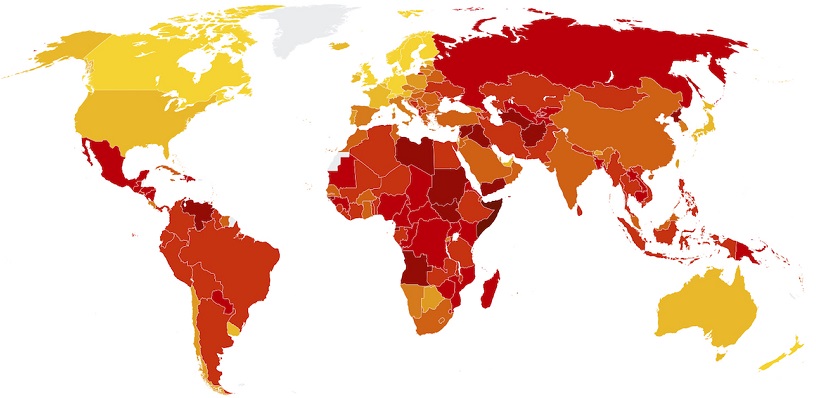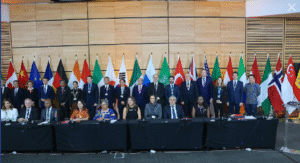High Corruption burden in more than two-third of countries : TI

TravelBizNews —
Kathmandu: The majority of countries are moving too slowly in their efforts in controlling corruption according to an index released by Transparency International.
The index, which ranks 180 countries and territories by their perceived levels of public sector corruption according to experts and businesspeople, uses a scale of zero to 100, where zero is highly corrupt and 100 is very clean. This year, the index found that more than two-thirds of countries score below 50, with an average score of 43.
Over the last six years, several countries significantly improved their Corruption Perceptions Index (CPI )score, including Côte d’Ivoire, Senegal and the United Kingdom, while several countries declined, including Syria, Yemen and Australia.
This year, New Zealand and Denmark rank highest with scores of 89 and 88 respectively.
Syria, South Sudan and Somalia rank lowest with scores of 14, 12 and 9 respectively. The best performing region is Western Europe with an average score of 66. The worst performing regions are Sub-Saharan Africa (average score 32) and Eastern Europe and Central Asia (average score 34).
This year’s results of the Corruption Perceptions Index continue to show a high variance in public sector corruption across the Asia Pacific region.
From top scorers like New Zealand and Singapore, to some of the worst scorers like Cambodia, North Korea and Afghanistan, more than half of the countries in the Asia Pacific score less than 50 on the index.
The region scores just 44 on average. With a scale of 0 to 100, where 100 means very clean and 0 reflects a deep-rooted, systemic corruption problem, the Asia Pacific countries, on average, are failing.
In the last six years, only a few countries in the Asia Pacific region experienced small, incremental changes indicating signs of improvement.
Unfortunately, the results from the 2017 index also show that corruption in many countries is still strong. Often, when individuals dare to challenge the status quo, they suffer the consequences. In some countries across the region, journalists, activists, opposition leaders and even staff of law enforcement or watchdog agencies are threatened, and in the worst cases, even murdered.
Philippines, India and the Maldives are among the worst regional offenders in this respect. These countries score high for corruption and have fewer press freedoms and higher numbers of journalist deaths.
Analysis of the index results by Transparency International further examined the relationship between corruption levels, the protection of journalistic freedoms and engagement of civil society. It found that almost all journalists killed since 2012 were killed in corrupt countries.
“No activist or reporter should have to fear for their lives when speaking out against corruption,” said Patricia Moreira, managing director of Transparency International. “Given current crackdowns on both civil society and the media worldwide, we need to do more to protect those who speak up.”
“CPI results correlate not only with the attacks on press freedom and the reduction of space for civil society organizations,” said Delia Ferreira Rubio, chair of Transparency International. “High levels of corruption also correlate with weak rule of law, lack of access to information, governmental control over social media and reduced citizens’ participation. In fact, what is at stake is the very essence of democracy and freedom.”
Transparency International’s flagship publication – Corruption Perceptions Index is the leading global indicator of public sector corruption since its inception in 1995.
For more information , visit www.transparency.org/research/cpi
Feb .21, 2018















